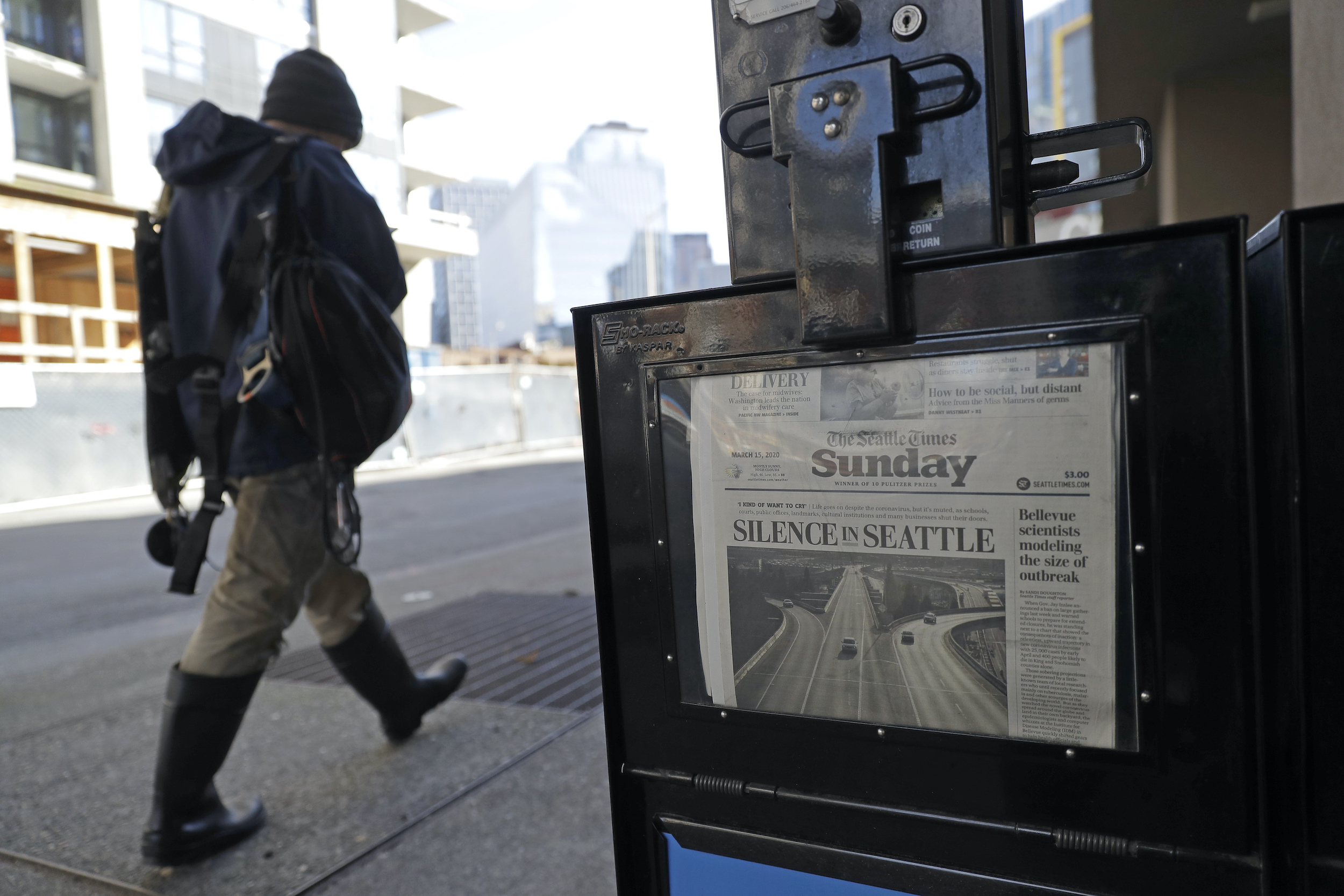
We need new models and must educate the next generation about how journalists do their work to set their work apart from other sources of information.
Local newspaper reporters who doggedly attend school board, planning commission and city council meetings and who scan police blotters and pore over budgets and contracts are essential cogs in our communities. They serve as the eyes and ears of the public and play a critical role as watchdogs for waste, fraud and abuse and holding officials accountable.
I know this firsthand: I began what became a nearly three-decade journalism career playing this role in Colonie, New York, and later in Bergen County, New Jersey.
Strong local news outlets also help to strengthen civic life, encouraging people to become involved in their communities and serving as virtual town squares. In fact, as the COVID-19 crisis continues, a new Pew Research survey found Americans believe local news outlets are more credible sources of information about the pandemic than the news media in general.
Yet, these vital institutions are being lost in one community after another as financial losses force local newspapers to close their doors or thin their ranks.
Amid the collapse of the advertising-driven business model for newspapers, at least 1,800 communities across the U.S. that had a local news outlet in 2004 no longer did so by the start of this year, according to a new report by Penelope Muse Abernathy, the Knight Chair in Journalism and Digital Media Economics at the University of North Carolina, and her research team. The report — “News Deserts and Ghost Newspapers: Will Local News Survive?” — found that 2,100 newspapers have failed over the past 15 years, including 70 dailies and more than 2,000 weeklies or non-dailies. Many of the communities without any news outlet are isolated or struggling economically.
The growth of these news deserts is a grave threat to democracy. When the public has little or no access to credible news sources, falsehoods, hoaxes and conspiracy theories can spread unchecked. Harmful content exploits our values, sows discord and undermines trust in our institutions and the quality of our public life.
The closure of a local newspaper can have other negative effects on a community, resulting in lower voter turnout and fewer citizens willing to run for office. Across the country, government borrowing costs have increased in counties that lost a newspaper and had less watchdog coverage of local public officials.
Even in communities where newspapers remain, fewer reporters are left on the beat. Between 2008 and 2019, newspapers lost half their newsroom employees. Over the past two decades, newspaper jobs have fallen more dramatically than employment in declining industries like coal mining and fishing.
The economic crisis triggered by COVID-19 is another body blow to journalism. An estimated 36,000 news media employees have been let go, furloughed or suffered pay cutbacks since the start of the pandemic. This is happening even as local news is more essential than ever. Journalists are risking their lives to cover the pandemic’s impact in their communities and to provide reliable information so the public can find the help it needs and stay safe.
How do we stem this tide? One solution is new nonprofit models for local and watchdog journalism, such as ProPublica and The Texas Tribune, which are highly successful pioneers. Organizations like the Institute for Nonprofit News and the for-profit Local Independent Online News Publishers provide guidance on how journalists can support or start their own local news sites. Foundations, as well as Google, are experimenting with ways to provide revenue for start-ups and local publishers.
Another essential step is educating the next generation about how journalists do their work and how the standards, transparency and accountability of quality journalism set it apart from so many other sources of information — and misinformation.
In 2008, I ended my journalism career to found the News Literacy Project with the goal of giving middle school and high school students the tools to know what news and other information to trust, as well as an appreciation of the vital role of the First Amendment and a free press in a democracy. My hope was that this would build an appreciation and demand for quality journalism that would help sustain it in the face of an increasingly complex information landscape.
In the past decade, we’ve been encouraged to see that this is working in classrooms across the country. When the newsgathering process is demystified, and young people understand the value of content that seeks to inform them in an accurate, independent and contextual way, they are more likely to recognize it and seek it out. Moreover, they are not only more inclined to consume news, but also to interact with their communities and the wider world in a more informed and engaged manner.
As news deserts and hollowed out newsrooms proliferate, the stakes for our communities and our country are high.
The late John Carroll, one of the most revered newspaper editors of his generation and a founding member of the News Literacy Project’s board, told the PBS program “Frontline” in 2007: “Reporting is absolutely an essential thing for democratic self-government. Who’s going to do it? Who’s going to pay for the news? If newspapers fall by the wayside, what will we know?”
Alan C. Miller is the founder and CEO of the News Literacy Project, a national nonpartisan education nonprofit. He won the Pulitzer Prize for National Reporting in 2003 as a reporter at the Los Angeles Times.
"Give" - Google News
July 06, 2020 at 07:20PM
https://ift.tt/3iCRxQI
Give local journalism a fighting chance by creating a demand for it - Poynter
"Give" - Google News
https://ift.tt/2YqGX80
https://ift.tt/2YquBwx
Bagikan Berita Ini














0 Response to "Give local journalism a fighting chance by creating a demand for it - Poynter"
Post a Comment